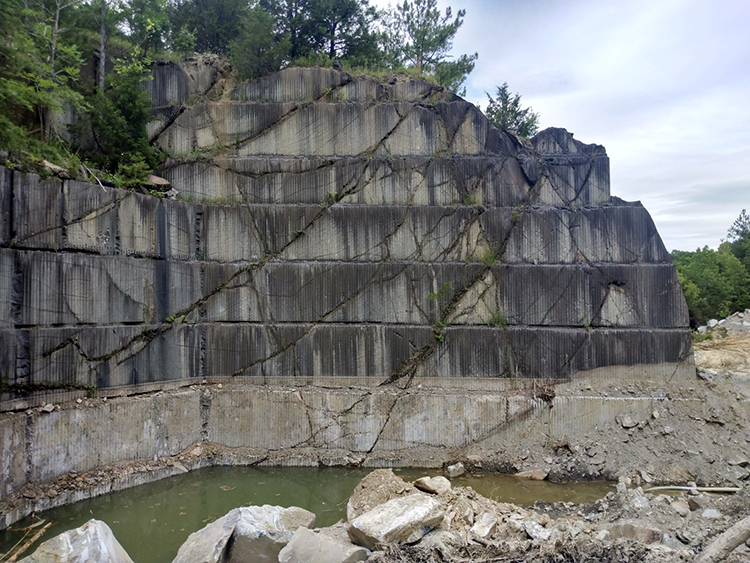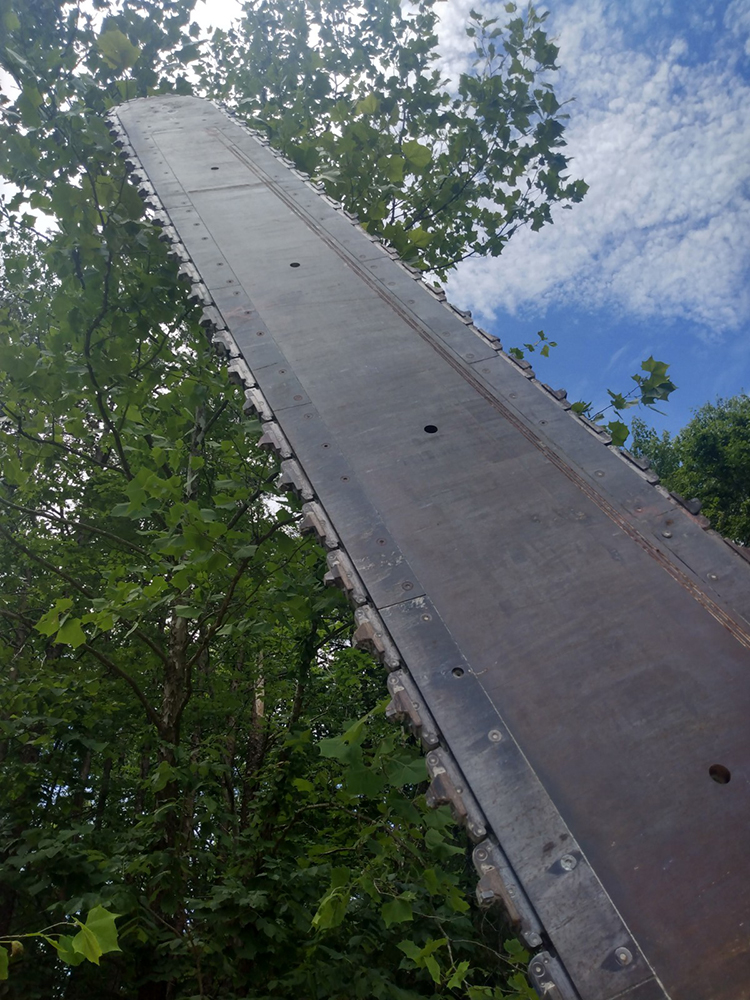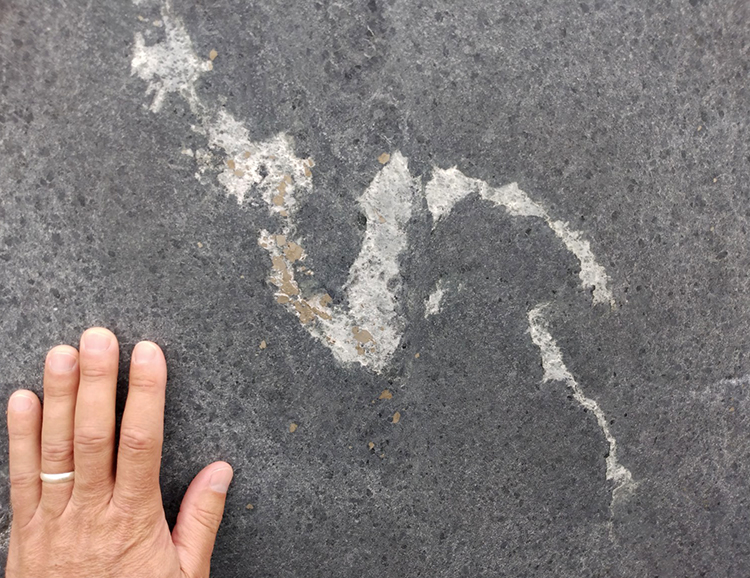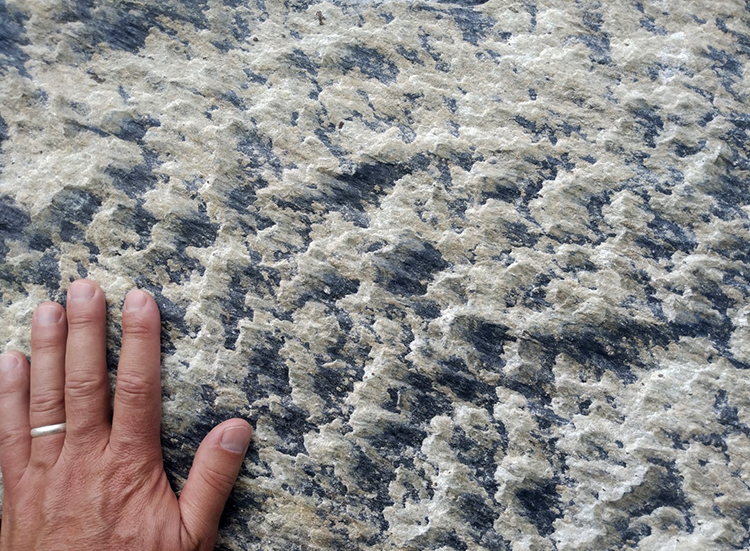Earlier this summer, I was lucky enough to visit a soapstone quarrying operation in Schuyler, Virginia, right on the Albemarle/Nelson County line.
These soapstone bodies are metamorphosed ultramafic intrusions into the Neoproterozoic sedimentary deposits of the Lynchburg Group. The protolith peridotite sill crystallized at ~580 Ma, meaning the host sediments are older than that (but younger than the Grenvillian basement complex that underlies both). Then both plutonic rock and sedimentary strata were metamorphosed during the Alleghanian Orogeny at ~300 Ma, thus becoming soapstone and metasedimentary rock.
We visited three separate quarries over the course of the day, but this was the only active one:

There’s a lot to see in that image: you can see the old quarry high wall (upper six berms) as well as a fresher face down at the bottom, where material has been removed more recently. The delicate vertical “fluting” you see on the old upper faces is from the previous extraction technology: drilling a lot of parallel vertical holes, and then breaking out slabs along that perforated weakness. Nowadays, they have a more efficient way of getting the rock out:

If that looks like a big chainsaw to you, congratulations: that’s pretty much exactly what it is, but the bar is more than fifteen feet long, and the individual carbide teeth are an inch square. They slice into the soapstone and polish it into slabs, aiming for bits that show veining so people will find it an attractive choice for countertops. Here’s a detail of one of the veins, made principally of talc (white) and pyrite (brassy).

But there was some structure to be seen, too. If you go back to that first photo and take another gander at it, you’ll note some diagonal fractures. Those are a source of some consternation to the quarry operators, since they are planes of weakness that can allow rockslides. Most challenging is when a steeply dipping fracture dips into a quarry wall, daylighting with a big wedge of rock above the fracture surface.

If you look at the fracture surfaces themselves, they show slickensides, so these are actually small faults.

They indicate an oblique sense of motion that presumably accompanied metamorphism. The soapstone is more foliated closer to its margins, where it is in contact with the Lynchburg Group metasediments. The most massive stone in the middle is most valuable economically. Between the foliation and the faults, there’s a lot of soapstone here that doesn’t make it to market – which means plenty for the curious visiting geologist to browse through and select samples from!

When it leaves the quarry soapstone metamorphoses into “granite”.
In this case, they are pretty proud of it being soapstone, and label it as such.
Thank you for soapstone quarry and Lynchburg Group metasediments. This is a different scenario than the Terranes with mélange units here on the West Coast. I use the soapstone for sculptures and was happy to find soapstone along the Elk River, OR, east of Port Orford. The deformation is amazing to investigate, and in that area, the metamorphic fluid that caused alteration, had caused talc to form in sheared igneous and sedimentary boundary rock, too.